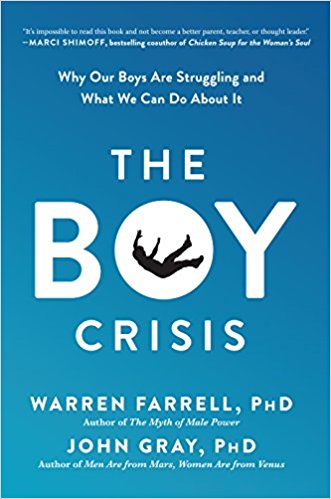![]()
Girls Are Beneficiaries Of Gender Gap
The Wall Street Journal, by Diane Ravitch, Thursday, December 17, 1998
Some of us grew up with the image of reporters as tough-minded skeptics. Yet there were no tough-minded reporters in sight in 1992, when the American Association of University Women released its report "How Schools Shortchange Girls." Every newsmagazine, newspaper and network television program did a major story on it, without making any attempt to examine the underlying evidence for the AAUW's charge that the schools were harming girls.
The schools, we were told, were heedlessly crushing girls' self-esteem while teachers (70% of them female) were showering attention on boys. Worst among their faults, according to the report, was that the schools discouraged girls from taking the math and science courses that they would need to compete in the future. The report unleashed a plethora of gender-equity programs in the schools and a flood of books and articles about the maltreatment of girls in classrooms and textbooks.
Now the U.S. Department of Education has released a report on high school transcripts that demolishes the AAUW's claim that girls were not taking as many courses in mathematics and science as boys. This new report shows that in both 1990 and 1994, female high school graduates had higher enrollments than boys in first- and second-year algebra and in geometry; among the graduates of 1994, there were essentially no differences between boys and girls in their participation in precalculus, trigonometry, statistics and advanced placement calculus.
In science courses, the picture was much the same. Female graduates in both 1990 and 1994 had higher enrollments than boys in both biology and chemistry; the only course that had a higher male enrollment was physics, studied by 27% of the boys but only 22% of the girls. In every other science course, the differences between boys and girls were slight or favored girls. Overall, girls are much better prepared by the schools than are boys: The latest figures show that 43% of female graduates took a rigorous college-preparatory program in 1994, compared with only 35% of boys.
To make matters worse for the AAUW, all of its other charges have been definitively refuted in a careful review of the research by Judith Kleinfeld of the University of Alaska. Prof. Kleinfeld found, for example, that there is little evidence that girls have lower self-esteem than boys or that boys get more attention in the classroom than girls.
Far from shortchanging girls, the schools have been the leading edge in creating gender
equity in the past generation. Girls get better grades than boys; have higher scores in reading and writing;
are more likely than boys to take advanced placement examinations; and are likelier to go to college. In
1970, women were only 41% of all college students. Today, female students receive 55% of all bachelor's
degrees and 55% of all master's degrees. Indeed, many university campuses have begun to worry about gender
imbalance, since men are a decided minority on virtually every campus.
Men still get a majority of professional degrees, but even here the numbers are changing fast. In 1970,
women earned only 8% of medical degrees; by 1995, that number had increased to 39%. In 1970, women received
only 5% of law degrees; in 1995, 43%.
At the same time that the AAUW ginned up a nonexistent crisis about girls, the press totally ignored the data on boys. In school, boys are 50% more likely to repeat a grade than girls and represent more than two-thirds of the children placed in special education with physical, social and emotional problems. Boys are far more likely to be given Ritalin for attention deficit disorder. And talk about a crisis in self-esteem: young men (ages 15 to 24) are five times more likely to commit suicide than young women.
The shameful aspect of the AAUW's phony crisis--and of the media's gullibility in turning it into conventional wisdom--is that it diverted attention from the large and genuine gaps in American education, which are not between boys and girls, but among racial groups. African-Americans and Hispanics are far behind their white peers on every measure of school achievement. On the tests administered by the National Assessment of Educational Progress, average black and Hispanic 17-year-olds score at the same level as average white 13-year-olds. African-American boys, in particular, are at high risk of dropping out without graduating high school; among black college students, nearly two-thirds are female.
Alarmist rhetoric about the schools solves no problem, especially when the problem itself was invented for use in national advertisements and direct mail campaigns as a fund-raising tactic. One can only dream about what might have happened if the AAUW had focused the same amount of energy on recruiting talented women to teach in schools where minority kids are concentrated or on sponsoring charter schools for needy children.
Copyright 1998 Dow Jones & Company




